University of Strathclyde
Type of resources
Topics
Keywords
Contact for the resource
Provided by
Years
Formats
Representation types
Update frequencies
Scale
Resolution
-
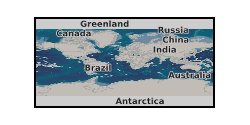
Raw CO2 and CH4 concentration data from a Picarro Cavity Ring Down Spectroscopy (CRDS) during experiments which tested the utility of methane as a tracer to quantify CO2 leakage into aqueous environments, as described in Myers, M., Roberts, J.J., White, C., and Stalker, L (2019) ‘An experimental investigation into quantifying CO2 leakage in aqueous environments using chemical tracers’ Chemical Geology
-
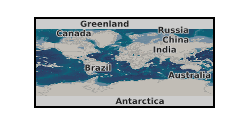
This presentation on the UKCCSRC Call 1 project 3D Mapping of Large-Scale Subsurface Flow Pathways using Nanoseismic Monitoring was presented at the UKCCSRC Manchester Biannual Meeting, 13.04.2016. Grant number: UKCCSRC-C1-19.
-
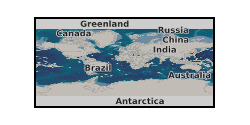
The aim of this project is to develop validated and computationally efficient shelter and escape models describing the consequences of a carbon dioxide (CO2) release from Carbon Capture and Storage (CCS) transport infrastructure to the surrounding population. The models will allow pipeline operators, regulators and standard setters to make informed and appropriate decisions regarding pipeline safety and emergency response. The primary objectives planned to achieve this aim are: 1.To produce an indoor shelter model, based on ventilation and air change theory, which will account for both wind and buoyancy driven CO2 ventilation into a building. The model will be capable of incorporating varying cloud heights, internal building divisions, internal and external temperature differences and impurities. 2.To create an external escape model that will determine the dosage received by an individual exposed to a cloud of CO2 outdoors. The model will be capable of incorporating multi-decision making by the individual in terms of the direction and speed of running, wind direction, the time taken to find shelter and the time required to make a decision, on becoming aware of the release. 3.To build a Computational Fluid Dynamics (CFD) model describing the effects of ingress of a CO2 cloud into a multicompartment building. 4.To validate the indoor shelter model and the CFD model against experimental test data for a CO2 release into a single compartment building. 5.To validate the indoor shelter model against further CO2 ingress scenarios modelled with CFD. 6.To conduct a sensitivity study using the shelter and escape models to calculate the dosage that an individual will be expected to receive under different conditions building height, window area, wind direction, temperature gradient, wind speed, atmospheric conditions, building size, running speed, direction of travel and reaction time. 7.To illustrate how the output from the models, in terms of dosage, can be used as input to Quantitative Risk Assessment (QRA) studies to determine safe distances between CO2 pipelines and population centres. 8.To demonstrate how the output from the models, in terms of dosage, can be used as input to the development of emergency response plans regarding the protection afforded by shelter and the likely concentrations remaining in a shelter after release. 9.To disseminate the findings of the research to relevant stakeholders through publication of academic journal papers as well as presentations at conferences, UKCCSRC meetings and relevant specialist workshops. Grant number: UKCCSRC-C2-179.
-
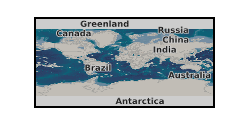
This poster on the UKCCSRC Call 1 project, Nano-seismic mapping at Aquistore, was presented at the Cranfield Biannual, 21.04.15. Grant number: UKCCSRC-C1-19.
-
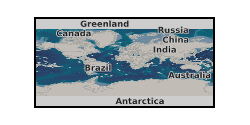
This poster on the UKCCSRC Call 1 project Flexible CCS Network Development (FleCCSnet) was presented at the CSLF Call project poster reception, London, 27.06.16. Grant number: UKCCSRC-C1-40. The aim of the project was to carry out research to enable the production of design and operating guidelines for CCS pipeline networks in order that these networks can react effectively to short, medium and long term variations in the availability and flow of CO2 from capture plants and also to the constraints imposed on the system by the ability (or otherwise) of CO2 storage facilities to accept variable flow. The amount of CO2 captured at a power station is expected to become more variable in the future as the electricity grid brings in more and more intermittent renewable energy (meaning a conventional power station is temporarily not needed or in reduced operation as the renewable energy takes precedent). The storage site will also face periods of maintenance which will impose constraints on the flow into the store and it is also important to look at the case of upset conditions in order to be able to predict any potential problems. Solutions to these all these issues need to be factored into the design of the CCS network, the focus of the project was to identify the issues surrounding flexibility and explore some of them.
-
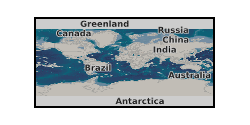
This data contains the output from the first Flexible CCS Network Development (FleCCSnet) workshop of stakeholders discussing the development of CO2 networks in the UK. The first was held on the 30 April 2014 at the University of Edinburgh, UK. The purpose of Workshop 1 was to identify and confirm the key questions to be considered in order to understand the most likely impacts of variability in the CO2 sources and variability in CO2 sinks on CO2 transport system design and operation. There were a total of 21 attendees including 7 representatives from PSE, Scottish Power, BP, SCCS, Parsons Brinckerhoff, Element Energy, and AMEC. The dataset consists of two reports. The first report, 'Developing CO2 networks: Key lessons learnt from the first Flexible CCS Network Development (FleCCSnet) project workshop', summarises the workshop findings, which have been used to create a series of scenarios that were investigated by transient simulation. The scenarios developed are described in the second report, 'Developing CO2 networks: Scenarios building on the first Flexible CCS Network Development (FleCCSnet) project workshop'.
-
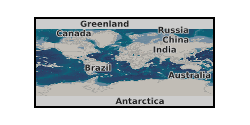
This presentation on the UKCCSRC Call 1 project, Flexible CCS Network Development, was presented at the Cranfield Biannual, 22.04.15. Grant number: UKCCSRC-C1-40.
-
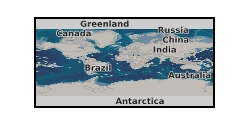
This project will produce and disseminate the first design and operating guidelines for the flexible operation of CCS pipeline networks. The research will explore how CCS pipeline networks can react effectively to short, medium and long term variations in the availability and flow of CO2 from capture plants, as well as responding to the constraints imposed on the system by the ability (or otherwise) of CO2 storage facilities to accept variable flow. The work will develop relevant scenarios for modelling the likely variability of CO2 flow in a CCS pipeline network, develop hydraulic models of CO2 behaviour, engage stakeholders in the process through practitioner workshops, and deliver guidelines to the industry and other interested stakeholders. Grant number: UKCCSRC-C1-40.
-
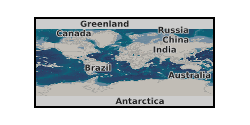
This Microsoft Excel document contains 5 worksheets providing data produced by research as part of UKCCSRC Call 1 funded project (grant number UKCCSRC-C1-31) and UKCCSRC funded international exchange. These data are presented and discussed in the manuscript "Geochemical tracers for monitoring offshore CO2 stores" by J. Roberts, S. Gilfillan, L. Stalker, M. Naylor, https://doi.org/10.1016/j.ijggc.2017.07.021. Then data details the assumptions around background concentrations of chemical tracers in the atmosphere and seawater, cost per litre, and how tracer detection concentrations (and so cost and potential environmental impact were calculated).
-
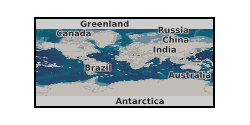
This is a blog (Workshop1, 30.04.14) on the UKCCSRC Call 1 project, Flexible CCS Network Development. Grant number: UKCCSRC-C1-40.
 NERC Data Catalogue Service
NERC Data Catalogue Service